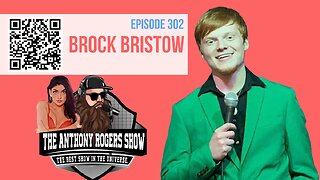Hypotension _Resonance therapy session_BIORESONANCE SOUND THERAPY
Гипотония _Сеанс резонансной терапии_БИОРЕЗОНАНСНАЯ ЗВУКОВАЯ ТЕРАПИЯ
#биорезонанс #сеанс резонансной терапии#звуковое_лечение
#bioresonance #Resonance therapy session#sound_treatment
Low blood pressure is generally considered a blood pressure reading lower than 90 millimeters of mercury (mm Hg) for the top number (systolic) or 60 mm Hg for the bottom number (diastolic).
What's considered low blood pressure for one person might be OK for someone else. Low blood pressure might cause no noticeable symptoms, or it might cause dizziness and fainting. Sometimes, low blood pressure can be life-threatening.
The causes of low blood pressure range from dehydration to serious medical conditions. It's important to find out what's causing low blood pressure so that it can be treated, if necessary.
Types of low blood pressure include:
Orthostatic hypotension (postural hypotension). This is a sudden drop in blood pressure when standing from a sitting position or after lying down. Causes include dehydration, long-term bed rest, pregnancy, certain medical conditions and some medications. This type of low blood pressure is common in older adults.
Postprandial hypotension. This drop in blood pressure occurs 1 to 2 hours after eating. It's most likely to affect older adults, especially those with high blood pressure or autonomic nervous system diseases such as Parkinson's disease. Eating small, low-carbohydrate meals, drinking more water, and avoiding alcohol might help reduce symptoms.
Neurally mediated hypotension. This is a blood pressure drop that happens after standing for long periods. This type of low blood pressure mostly affects young adults and children. It might result from miscommunication between the heart and the brain.
Multiple system atrophy with orthostatic hypotension. Also called Shy-Drager syndrome, this rare disorder affects the nervous system that controls involuntary functions such as blood pressure, heart rate, breathing and digestion. It's associated with having very high blood pressure while lying down.
Low blood pressure (hypotension) symptoms may include:
Blurred or fading vision
Dizziness or lightheadedness
Fainting
Fatigue
Trouble concentrating
Nausea
For some people, low blood pressure may be a sign of an underlying health condition, especially when it drops suddenly or occurs with symptoms.
A sudden fall in blood pressure can be dangerous. A change of just 20 mm Hg — a drop from 110 mm Hg systolic to 90 mm Hg systolic, for example — can cause dizziness and fainting. And big drops, such as those caused by uncontrolled bleeding, severe infections or allergic reactions, can be life-threatening.
Extreme low blood pressure can lead to a condition known as shock. Symptoms of shock include:
Confusion, especially in older people
Cold, clammy skin
Decrease in skin coloration (pallor)
Rapid, shallow breathing
Weak and rapid pulse
Music affects a person, it can calm and cheer up, sounds can heal. The therapeutic effect is due to the frequency fluctuations of various sounds that resonate with various organs of the body. Sounds have bioresonance compatibility with the vibrations of human internal organs, which is the basis of the positive effect of sound treatment. The sound vibrations of music trigger many mechanisms of higher nervous activity in the patient's subconscious and start the healing process.
Sound therapy does not replace medical treatment, but complements it, improves the positive dynamics of treatment and speeds up recovery.
TO ACHIEVE A POSITIVE RESULT, DAILY LISTENING TO VIDEOS IS REQUIRED.
-
 2:59:18
2:59:18
Fresh and Fit
7 hours agoFresh&Fit After Hours w/ Girls
94.1K110 -
 3:43:35
3:43:35
Alex Zedra
8 hours agoLIVE! Giving away an M249 SAW | PJ Party + Games
29.7K8 -
 29:23
29:23
Standpoint with Gabe Groisman
15 hours agoEp. 21. Can Israel "End Hamas"? IDF Brig. General Res. Amir Avivi, Founder of IDSF
36.2K38 -
 1:26:49
1:26:49
Glenn Greenwald
12 hours agoCampus Protest Propaganda Snowballs; Congress Moves to Criminalize Israel Critics | SYSTEM UPDATE #264
83.6K427 -
 1:25:44
1:25:44
The Anthony Rogers Show
16 hours agoEpisode 303 - Brock Bristow
50.1K2 -
 1:24:15
1:24:15
Mally_Mouse
8 hours agoLet's Hang!!
33.7K6 -
 1:19:06
1:19:06
TENET Media
11 hours agoGuest Vinoo Varghese on NY ‘Ghost Gun’ Case, UCLA Israel-Palestine Riot ft. Frank | The MC Hour #24
46.6K17 -
 1:01:08
1:01:08
The StoneZONE with Roger Stone
13 hours agoHow The US Gov't Spies On You Without Probable Cause - Like They Did To Carter Page – The StoneZONE!
66.7K25 -
 1:40:04
1:40:04
The Big Mig™
1 day agoSpeaker Johnson, "You're not in our Club JR MAJEWSKI, No Funding for You"!
63.9K40 -
 2:25:24
2:25:24
WeAreChange
12 hours agoAstraZeneca Admits In Court Documents Its Covid Vax Can Cause Rare Blood Clots!
109K78